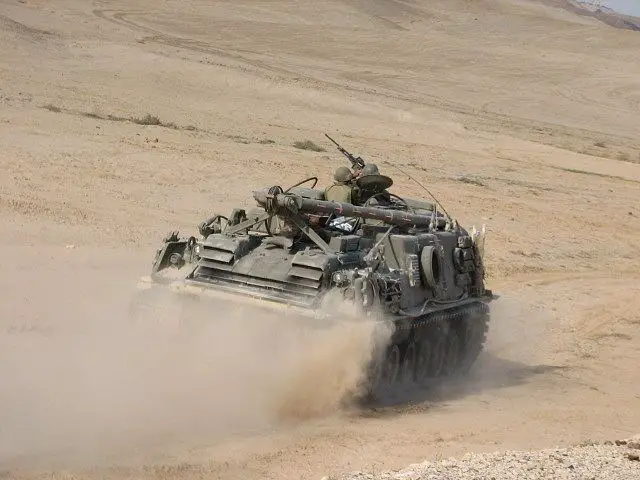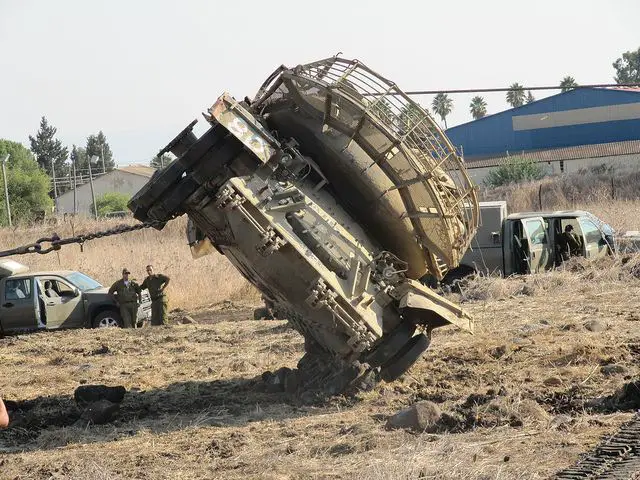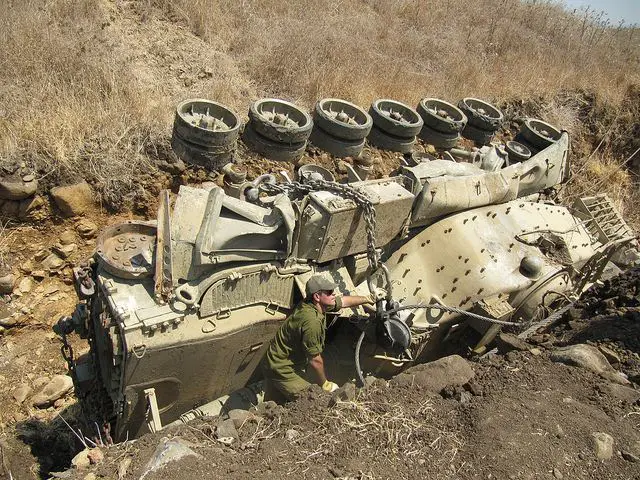| a | |||
Israeli Army Rescue tank Training |
|||
| Friday, January 4, 2013, 09:55 AM | |||
| Israeli army training military exercises under fire for Forward Rescue Tank Unit. | |||
The
Central Command’s Forward Rescue Unit, comprising entirely of reservist
soldiers, completed a weeklong training exercise last week to train for
the extraction of heavy and light vehicles caught under fire in battle.
The various drills included the extraction of tanks, APCs (armored personnel
carriers, and AFVs (armored fighting vehicles). Author: Yael Livnat |
|||
 A reserves brigade in the Jordan Valley Division in a Tank Evacuation Drill. |
|||
| |
|||
The
Forward Rescue Unit is regularly made up of four separate squads and trains
as a company once a year. This sets them apart from other reserve units,
which are required by law to conduct unit wide trainings once every three
years. The unit mainly deals with especially complex rescue operations
that are difficult for standard rescue forces to perform. |
|||
 |
|||
The
unit's recue company commander Chief Warrant Officer (res.) Richard Avizeret
explained that the most complex rescue missions are those in which vehicles
are caught under fire. “When we are rescuing in normal conditions
not under fire, we can arrive at the field, exit the transport vehicle,
and learn and see what needs to be done and how to perform the extraction,
when all the options are open in front of us. But when we are under tense
fire, there is a minimum of things we take with us, and we must work quickly
with the means available,” explained CWO (res.) Avizeret. |
|||
 |
|||
The
unit’s reservists must be permanently available and fit to perform
missions. “The unit is considered an elite reserve unit by the Ordnance
Corps. It has many volunteers who are past the time of their mandatory
reserve service and they are all available twenty four seven,” said
Maj. Avisha. He added that there are high demands placed on members of
the unit, and that “it is a role that demands a high level of professionalism.
Rescue work is very “dirty”, always in physically unsuitable
locations, and in difficult weather conditions. Rescue work can take many
hours, and is founded on a high level of motivation, connections between
people, the value of camaraderie, and that is a thing that very much distinguishes
the unit.” The forward rescue unit may be in a state of constant readiness but CWO (res.) Avizeret said that there is always a need for more preparation. “I never say that we are ready enough because I believe that there is always more to learn and more to aspire towards. We cannot know what will happen each day and surprising events always happen,” he said, adding that, “from year to year we are in a better state of readiness, and together with that we are exposed to new information. In Defensive Shield, the threat was bullets, today it's missiles and anti-tank mines, and it is these new threats that we need to deal with, therefore we will not rest on our laurels but aspire to learn more at all times.” |
|||
Israeli army training military exercises under fire for Forward Rescue Tank Unit 0401132
- Posted On















